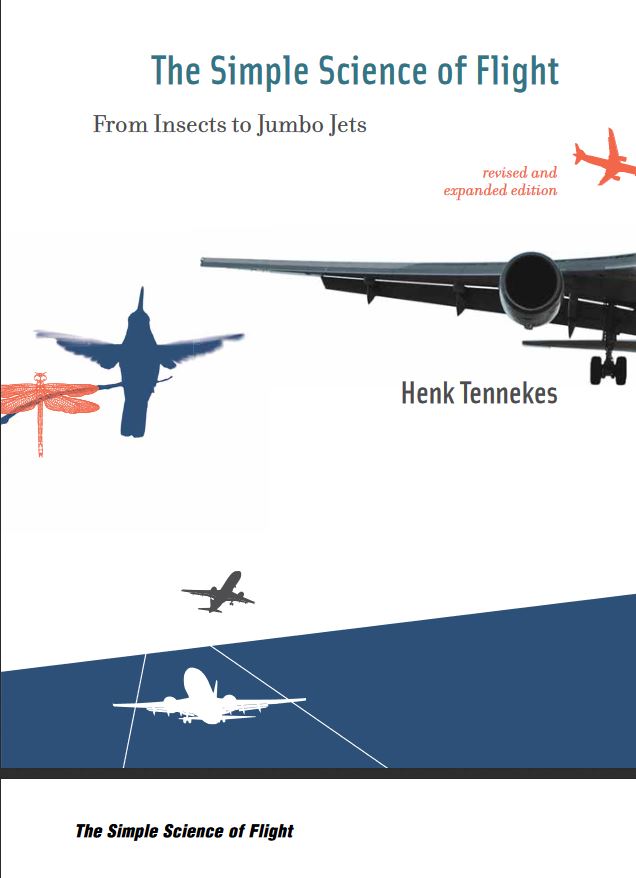
Henk Tennekes
Henk Tennekes
The Simple Science of Flight: From Insects to Jumbo Jets
tagPhysics tagAerodynamics tagComputational Fluid Dynamics
As reported by Flying Singer.
From insects to 747's it's all the same simple rules.
An amazing thing is the single graph that compares the flying properties of virtually everything, from gnats to Cessnas to 747's. The Great Flight Diagram is a log-log plot of wing loading (top scale) or equivalent cruise speed (W/S = 0.38V^2, wing loading proportional to speed-squared, bottom scale) vs. weight (vertical scale), from tiny insects to B747.
This shows heavier things have to fly faster and (equivalently) have higher wing loading.
The trend line represents what seems to be ideal for flight and energy efficiency over a wide range of sizes and weights. Fighters and B737 have higher than average wing loading so they go faster. Tennekes says the B747 is in many ways an ideal flying machine -- if you want to fly 300 tons at 40,000 feet (where air temp gives most efficient jet engine operation), you take the wing-loading on the trend line, and you get a cruise speed (when adjusted for air density) of about 500 mph. Pretty good, but only about 100 times as fast as a fruit fly, despite a weight ratio of 500 BILLION over the fruit fly.
There's a bird-airplane gap in the diagram, but no bird-insect gap. Go figure!

log-log plot of wing loading (top scale) or equivalent cruise speed (W/S = 0.38V^2, wing loading proportional to speed-squared.


MiGMan
Includes a fascinating chapter on the Concorde and the un-economics of supersonic flight at 58,000 feet and Mach 2.
| Ac | Fuel burn | Payload for transatlantic flight |
|---|---|---|
| Concorde | 77 tons | 100 passengers |
| 747 | 70 tons | 350 passengers 30 tons of cargo |

The rationale behind swing-wing aircraft such as the F-14 and F-111.

Forces in horizontal flight.

Wingtip vortices and exhaust contrails.

Human powered aircraft: Puffin (1961), Gossamer Condor (1979) and Daedalus (1988).
